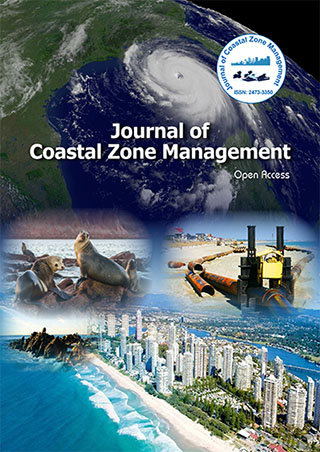Indexed In
- SafetyLit
- RefSeek
- Hamdard University
- EBSCO A-Z
- OCLC- WorldCat
- Publons
Useful Links
Share This Page
Journal Flyer

Open Access Journals
- Agri and Aquaculture
- Biochemistry
- Bioinformatics & Systems Biology
- Business & Management
- Chemistry
- Clinical Sciences
- Engineering
- Food & Nutrition
- General Science
- Genetics & Molecular Biology
- Immunology & Microbiology
- Medical Sciences
- Neuroscience & Psychology
- Nursing & Health Care
- Pharmaceutical Sciences
Abstract
Effects of Dredging Induced Resuspension of Fine-Grain Sediment on Two Scleractinian Corals, Montastraea cavernosa and Stephanocoenia intersepta
Cheryl Hankins*, Keisha D. Bahr, Daphne White, Yung Jones, Adam Glahn, Wade Lehmann, Vladimir Kosmynin and William S. Fisher
Dredging, the removal of sediments and rocks from an aquatic environment, is necessary to ensure that adequate coastal infrastructure is maintained for maritime shipping. However, the sediment plumes generated by dredging could have adverse impacts on coral reef ecosystems that are already facing numerous local and global stressors. This is especially true in areas where the predominant strata are aragonitic limestone which must be physically broken apart to be extracted, leading to very high concentrations of fine suspended sediment in the water column. To examine the role suspended sediment plays in stress, this study exposed two coral species (Montastraea cavernosa and Stephanocoenia intersepta) to fine-grain sediment ranging from 0 to 511.7 mg L-1 for 30 days. Sediment characteristics were analyzed and water quality parameters were monitored. Growth, mortality and three bleaching indicators were documented after 10 and 30 days. No mortality or tissue loss was observed in either species. No significant differences in growth were observed in the 10-day exposure; however, both species had significant declines in calcification at the 30-day exposure. Bleaching indicators did not appear to be affected by sediment exposure at day 10 or 30. Reduction in photosynthetically active radiation was highly correlated with both turbidity metrics of NTU units and Total Suspended Solids. These data indicate that sediment may minimally impact coral in short-term exposures but can affect growth in longer-term exposures in multi-year dredging projects in sensitive tropical and sub-tropical environments.
Published Date: 2024-11-15; Received Date: 2024-10-16
